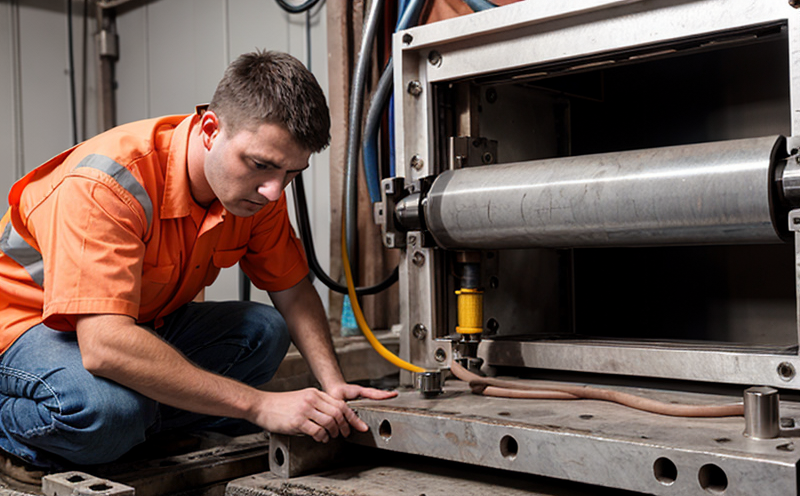IEC 60068 2 6 Vibration Mechanical Testing for Luminaires
The IEC (International Electrotechnical Commission) standard, specifically IEC 60068-2-6, provides a framework for vibration testing to assess the mechanical robustness of luminaires. This test ensures that lighting fixtures can withstand harsh environmental conditions and perform reliably under specified vibration levels.
The standard is widely recognized in the industry as it guarantees product safety and performance through rigorous testing protocols. It applies to various types of luminaires, including those used in industrial environments, commercial spaces, and residential settings. The primary objective of this test is to simulate real-world conditions that can affect the structural integrity of luminaires during transport or usage.
The vibration testing procedure involves placing the luminaire on a shaker table where it experiences controlled vibrations over time. These vibrations are designed to mimic potential environmental stressors such as road bumps, rough terrain, and other forms of mechanical strain. The test conditions can vary based on the intended application of the luminaire; for instance, commercial-grade luminaires may undergo more severe testing than residential units.
Preparation before the IEC 60068-2-6 test is crucial. Before placing the luminaire on the shaker table, technicians ensure that all components are assembled correctly and securely. This includes checking for any loose bolts or improperly fastened parts that could affect the outcome of the test. Additionally, the luminaire must be cleaned to remove any dust or debris which might interfere with its performance during testing.
During the test, engineers closely monitor the vibration levels and duration to ensure compliance with IEC 60068-2-6 requirements. They also observe changes in the luminaire’s structural integrity and electrical connections throughout the process. After completion of the test cycle, inspectors thoroughly examine the luminaire for any signs of damage or degradation.
Testing results are meticulously recorded and analyzed to determine whether the luminaire meets the specified standards. Compliance with IEC 60068-2-6 signifies that the luminaire can withstand environmental stresses without compromising its structural integrity, thus enhancing overall safety and reliability in demanding environments.
Industry Applications
| Application | Description |
|---|---|
| Industrial Lighting | Ensures that luminaires used in industrial settings can withstand the rigors of factory floors and warehouse environments. |
| Transportation Lighting | Guarantees safety in vehicles by ensuring luminaire durability during road travel. |
| Marine Lighting | Protects marine luminaires from the effects of sea motion and saltwater exposure. |
| Roadside Signage | Ensures that signs remain visible and functional despite road vibrations and weather conditions. |
| Sports Lighting | Guarantees the reliability of sports field luminaires under various environmental stresses. |
| Construction Site Lighting | Promotes safety on construction sites by ensuring that luminaires can endure heavy machinery vibrations. |
Why Choose This Test
The IEC 60068-2-6 vibration mechanical test is essential for manufacturers and quality control teams aiming to ensure the durability of their luminaires. By adhering to this standard, companies can validate that their products meet stringent safety and performance criteria. This testing process not only enhances product reliability but also builds consumer trust.
One key benefit of this test is its ability to identify potential weaknesses in luminaire design early in the development phase. Engineers can use these insights to improve future iterations, leading to more robust products overall. Additionally, compliance with IEC 60068-2-6 helps businesses avoid costly recalls and product failures later down the line.
Another advantage is that this test aligns manufacturers with global best practices in lighting design. With growing international markets, meeting such standards becomes increasingly important for expanding brand reach. Furthermore, it supports compliance with local regulations in different countries where the luminaire may be sold or installed.
The robust nature of IEC 60068-2-6 also fosters innovation within the lighting industry. As manufacturers strive to meet these high standards, they often push boundaries in terms of material selection and engineering techniques. This competitive environment drives technological advancements which benefit end users too.
International Acceptance and Recognition
The IEC 60068-2-6 vibration mechanical test is highly esteemed within the global lighting community due to its rigorous methodology and comprehensive coverage of environmental factors affecting luminaire performance. Many countries have adopted this standard as part of their national regulations, ensuring uniformity across borders.
International organizations like the European Commission (EC) recommend compliance with IEC 60068-2-6 for certain applications where vibration resistance is critical. Similarly, the United States Department of Transportation (USDOT) includes this standard in its guidelines for transportation safety equipment.
Recognition from these bodies lends credibility to manufacturers who pass the test, making it easier for them to enter new markets without additional certification requirements. It also facilitates smoother regulatory approval processes, reducing time-to-market delays.





